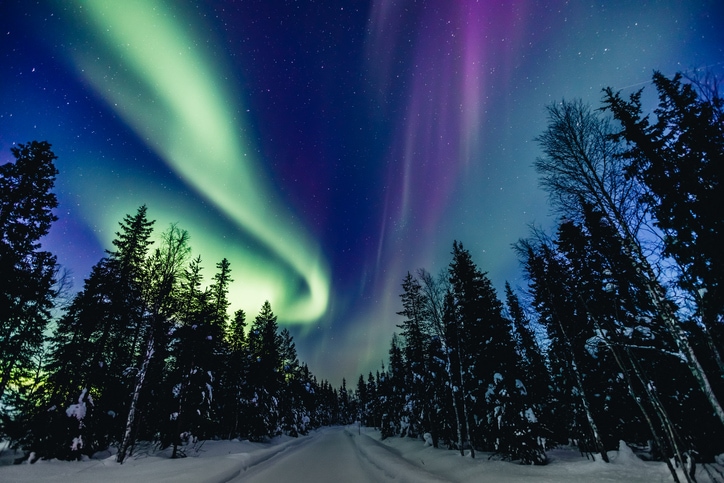What are the Myths and Legends about Aurora Borealis?
The aurora borealis, also known as the northern lights, has fascinated humanity for centuries. This natural light display, predominantly seen in high-latitude regions around the Arctic, has inspired countless myths and legends across different cultures. In this blog post, we will delve into the origins of these myths, explore how various cultures interpret the aurora borealis, and contrast these stories with scientific explanations. We will also discuss modern interpretations and common misconceptions about this mesmerising phenomenon.
The Origin of Aurora Borealis Myths
The origins of aurora borealis myths can be traced back to ancient times when people sought to explain natural phenomena through stories and legends. Before the advent of modern science, the mysterious lights in the sky were often attributed to the actions of gods, spirits, or other supernatural beings. These myths served not only as explanations but also as cultural narratives that reinforced societal values and beliefs.
In many cultures, the aurora borealis was seen as a bridge between the earthly realm and the divine. The lights were often considered omens or messages from the gods, and their appearance could signify anything from impending doom to a blessing. These early interpretations laid the groundwork for the rich tapestry of aurora folklore that we see across different cultures today.
Aurora Borealis in Different Cultures
Different cultures have their own unique interpretations of the aurora borealis. In Finnish folklore, the northern lights are known as “revontulet,” which translates to “fox fires.” According to legend, the lights are created by a magical fox sweeping its tail across the snow, sending sparks into the sky. This enchanting story reflects the deep connection between the Finnish people and their natural environment.
In Norse mythology, the aurora borealis was believed to be the reflections of the Valkyries’ armour as they led fallen warriors to Valhalla. The lights were seen as a symbol of honour and bravery, reinforcing the warrior culture of the Norse people. Similarly, the Inuit of North America believed that the lights were the spirits of their ancestors playing a game of football with a walrus skull, a belief that underscores the importance of community and tradition in Inuit culture.
In contrast, some cultures viewed the aurora borealis with fear and apprehension. For example, in medieval Europe, the lights were often seen as omens of war or disaster. These interpretations highlight the diverse ways in which different societies have understood and reacted to this natural phenomenon.
Scientific Explanations vs. Myths
While myths and legends provide fascinating cultural insights, the scientific explanation of the aurora borealis is equally captivating. The northern lights are caused by the interaction between solar wind particles and the Earth’s magnetic field. When these charged particles collide with gases in the Earth’s atmosphere, they emit light, creating the stunning displays we see in the sky.
Understanding the science behind the aurora borealis does not diminish its beauty or mystery. Instead, it adds another layer of appreciation for this natural wonder. The scientific explanation also helps to dispel some of the fear and superstition that have historically surrounded the phenomenon, allowing people to enjoy the lights with a sense of wonder and curiosity.
Modern Interpretations of Aurora Borealis
In modern times, the aurora borealis continues to inspire awe and wonder. Advances in technology have made it easier than ever to predict and observe the northern lights, leading to a surge in aurora tourism. People from all over the world travel to high-latitude regions like Lapland to witness this breathtaking spectacle.
Modern interpretations of the aurora borealis often focus on its beauty and the sense of connection it fosters with the natural world. For many, seeing the northern lights is a transformative experience that evokes a sense of peace and wonder. This contemporary view aligns with the growing appreciation for nature and the environment in today’s society.
Common Misconceptions about the Northern Lights
Despite the wealth of information available, several misconceptions about the aurora borealis persist. One common myth is that the lights can only be seen in winter. While it is true that the long, dark nights of winter provide optimal viewing conditions, the aurora borealis can actually occur year-round. The key is to have a dark, clear sky, which is why autumn and spring are also excellent times for aurora hunting.
Another misconception is that the northern lights are always green. In reality, the colours of the aurora borealis can vary depending on the type of gas particles involved in the collisions. While green is the most common colour, the lights can also appear in shades of red, yellow, blue, and violet.
Finally, some people believe that the aurora borealis can be predicted with absolute certainty. While advances in space weather forecasting have made it possible to predict auroral activity with a reasonable degree of accuracy, the phenomenon is still inherently unpredictable. Factors such as local weather conditions and solar activity can influence the visibility of the lights, making each aurora sighting a unique and special experience.
At VALO Finland, we are passionate about sharing the magic of the aurora borealis with our guests. Our luxury villas in Finnish Lapland offer the perfect vantage point for witnessing this natural wonder. With our expert guides and concierge services, we ensure that your aurora experience is both comfortable and unforgettable. Whether you are a seasoned aurora hunter or a first-time visitor, we invite you to join us in exploring the myths, legends, and beauty of the northern lights.
For those looking to immerse themselves in the enchanting world of the aurora borealis, VALO Finland provides an unparalleled experience. From the comfort of our luxurious villas to the expertise of our local guides, we offer everything you need to make your northern lights adventure truly magical. Come and discover the legends and beauty of the aurora borealis with us in the heart of Finnish Lapland.
